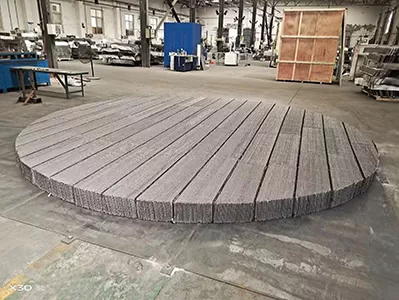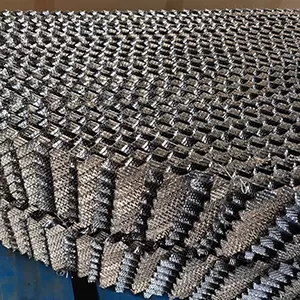Yes, ceramic corrugated packing is undoubtedly a type of structured packing. It fits squarely within the definition and classification of structured packing, characterized by its regular, ordered structure and purpose-designed performance for industrial separation processes.

Structured packing is defined by its orderly arrangement of packing units, which form uniform channels to enhance gas-liquid contact and mass transfer efficiency. Ceramic corrugated packing adheres strictly to this definition: its basic structure consists of multiple ceramic corrugated sheets arranged in a systematic pattern. These sheets are stacked with their corrugations oriented at specific angles (typically 30° or 45°) and alternating in direction between adjacent layers, creating a highly organized network of flow channels. This regular arrangement ensures consistent gas and liquid distribution, a hallmark of structured packing that distinguishes it from random packing, which lacks such uniformity.

In terms of classification, ceramic corrugated packing falls under the broader category of corrugated structured packing, one of the most common and widely used types of structured packing. Like other corrugated structured packings (such as metal or plastic variants), its design prioritizes maximizing specific surface area while maintaining low pressure drop. The ceramic material adds unique properties—excellent corrosion resistance, high-temperature stability, and chemical inertness—making it suitable for harsh environments involving strong acids, alkalis, or high temperatures, such as in pharmaceutical manufacturing, environmental protection, or chemical processing with aggressive media.
The structural regularity of ceramic corrugated packing directly contributes to its performance advantages. Unlike random packing, which relies on haphazard stacking, its ordered channels prevent uneven flow or channeling, ensuring efficient mass transfer across the entire packing bed. This makes it ideal for precision separation tasks where consistency and reliability are critical. Additionally, the ceramic material’s inherent durability under extreme conditions ensures long-term performance without degradation, further aligning with the functional requirements of structured packing in industrial applications.
In summary, ceramic corrugated packing meets all the criteria of structured packing: it features a regular, ordered structure, enhances gas-liquid contact through designed channels, and is engineered for efficient mass transfer. Its ceramic composition adds material-specific benefits, but its classification as structured packing is determined by its structural characteristics, confirming that it is indeed a type of structured packing.



